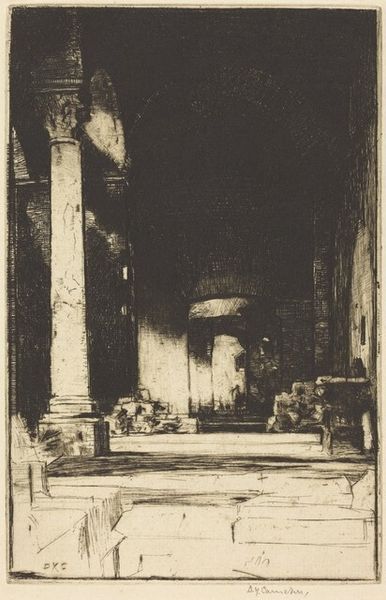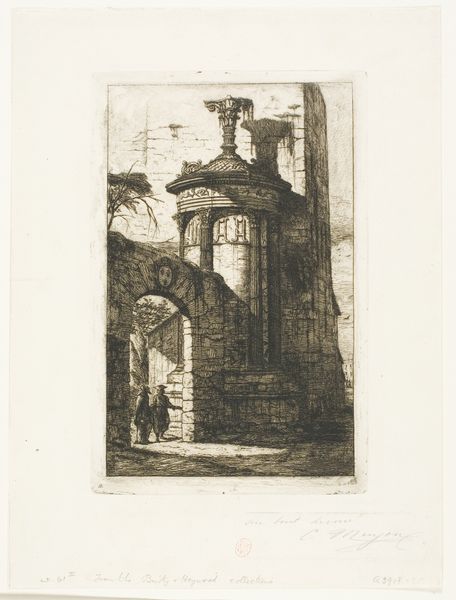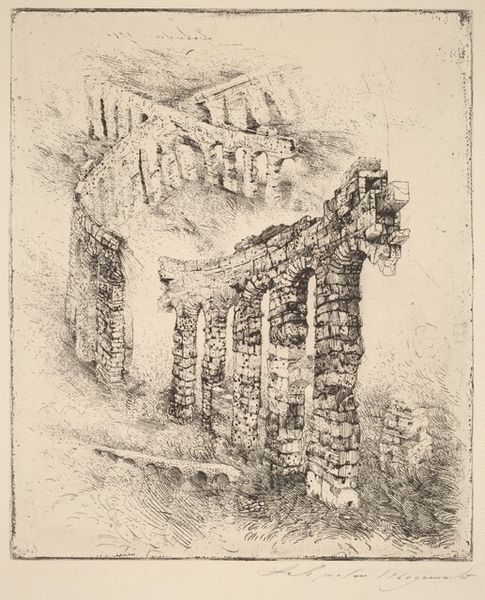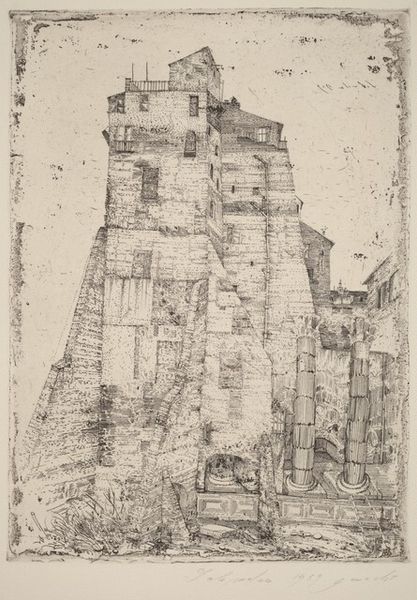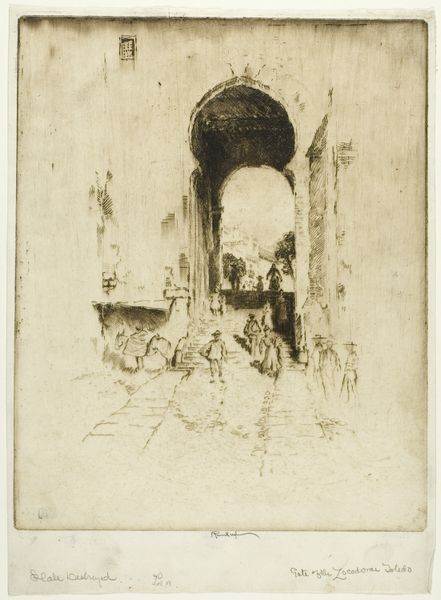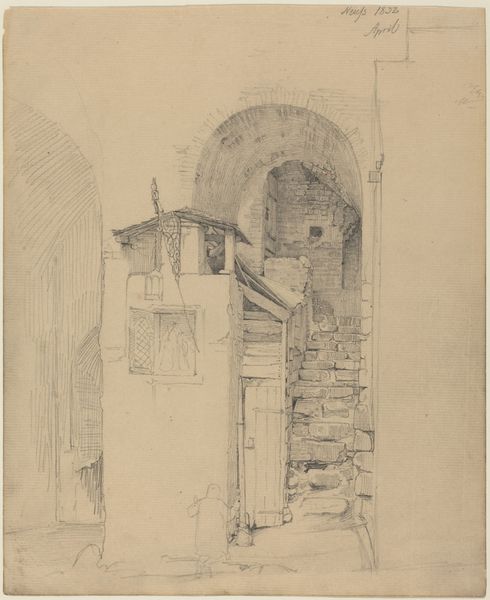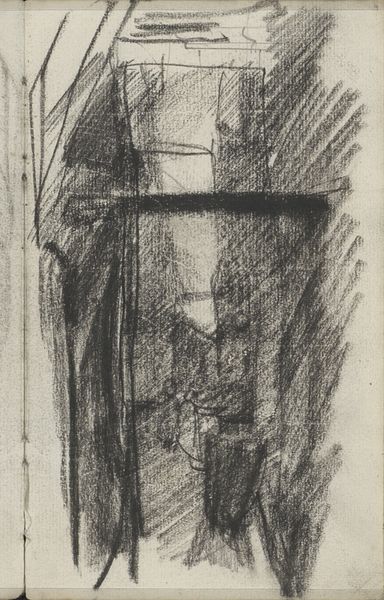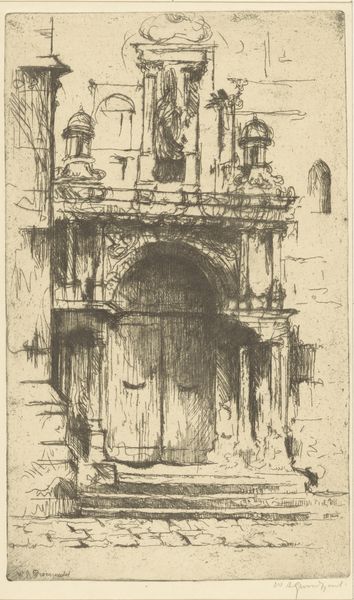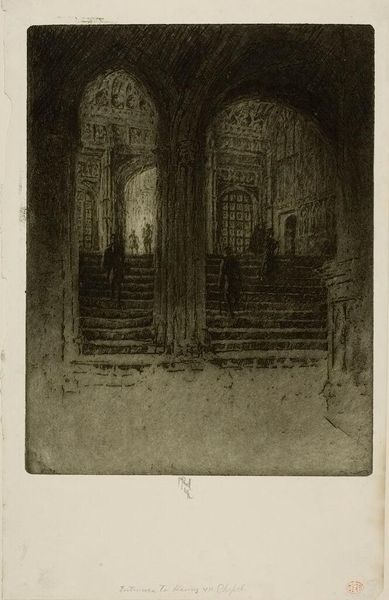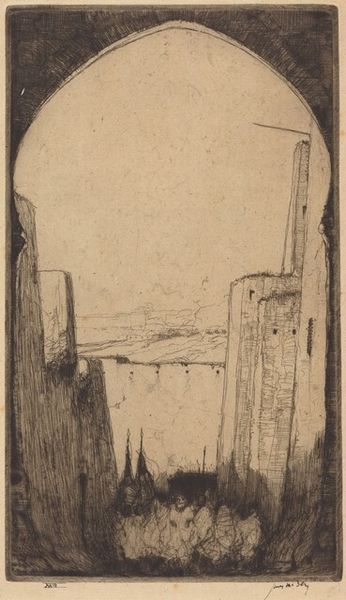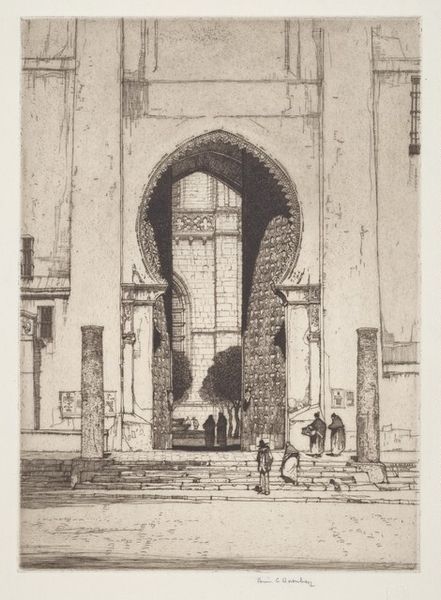
drawing, print, etching
#
drawing
# print
#
etching
#
pencil sketch
#
landscape
#
cityscape
#
realism
Copyright: National Gallery of Art: CC0 1.0
Editor: This is "Tepidarium: Thermae of Caracalla," an etching by David Young Cameron from 1925. The shadows give it such a dramatic, almost melancholic feel. What do you see in this piece? Curator: I see layers of time, etched not just in the plate, but into the very stones depicted. Look at how Cameron captures the ruins. What feelings do the imagery of ruins evoke within us? Editor: A sense of loss, definitely. Maybe the transience of human achievement? Curator: Precisely! These aren't just stones; they are loaded with cultural memory. The Roman baths, once a symbol of imperial power and social life, are reduced to skeletal remains. Consider the people in the archway. Are they ghosts, memories, or present day onlookers? Editor: They seem like they're passing through, oblivious to the weight of history around them. Curator: Or perhaps the artist meant for them to represent the flow of time itself? Notice how Cameron uses light and shadow not just to depict form, but also to evoke specific emotions and to obscure elements, creating mystery. What does that obscuration mean, in relation to your feelings about loss? Editor: I hadn’t thought about that, but the shadows almost seem to be consuming what’s left. Curator: Consider too the Tepidarium was meant for tepid bathing, between hot and cold. Could that, in Cameron’s eyes, serve as a metaphor for this ruin between presence and absence, usefulness and uselessness? Editor: That’s a really interesting idea! Seeing this as more than just a landscape, but as a meditation on time and memory changes my entire perspective. Curator: Indeed. Cameron uses the iconography of ruins to ask enduring questions about power, legacy, and our own fleeting existence.
Comments
No comments
Be the first to comment and join the conversation on the ultimate creative platform.
